Tomato variety "Auria" from Novosibirsk breeders, famous for its high yield and excellent fruit taste
Many gardeners want to plant tomatoes on their site that differ from conventional varieties. It is for such that the tomato culture Auria was created. Its elongated and forked at the tip fruits are so different from others that they cause constant curiosity and a desire to try the variety in your garden.
An unusual shape combined with excellent taste has long won the right to decorate not only everyday, but also festive tables at any time of the year, looking great both in fresh dishes and in winter preparations.
The content of the article
Description of the species
The culture was bred by Novosibirsk breeders in 1998. Due to the unusual appearance of the fruit, the tomato can be found under other names: Ladies' whim, Adam, Fun. But despite the variety of varietal names, the main characteristics remain unchanged.
Distinctive features
Indeterminate species, height - 2 m. The foliage is below average, the leaves are light green, small with large veins. Fruit clusters are located far from each other, each forming up to 10 ovaries.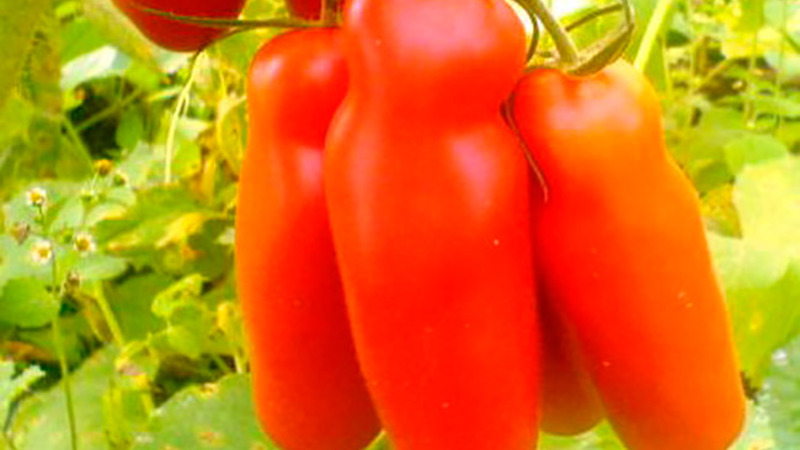
reference... The indeterminate species is not limited in growth. To determine the point of growth, pinch the crown of the plant.
The ripening period is early: from the moment the first shoots appear to full maturation, 100-110 days pass.
Productivity is high: up to 5 kg of vegetables are harvested from 1 bush, provided that 3-4 seedlings are planted per 1 sq. m. Recommended for cultivation in open ground and in greenhouse conditions.
Disease resistance is average, tomato is not resistant to fungal infections.
Needs compulsory pinching and garter. Due to the fragile stem, it does not support the weight of its own fruits.
Fruit characteristics
The average fruit weight is 140-160 g. The shape is uncharacteristic for a tomato: elongated, oblong, slightly bifurcated at the end, deep red color. The pulp is dense, juicy. The taste is excellent, sweet. The skin is thin, but strong, does not crack during heat treatment. There are 2 seed chambers, there are many seeds.
The purpose is universal: from fresh consumption to the preparation of various preserves. Also suitable for processing into tomato products.
Ripe vegetables are subject to long-term storage and perfectly retain their presentation during long-term transportation.
The photo shows the Auria tomato variety.
How to grow seedlings
Sowing seeds for seedlings begins 2 months before planting in the ground. Planting material is usually planted in February, but it is previously prepared for sowing.
reference... The culture is not hybrid, so you can prepare the seed for the next planting yourself.
Seed preparation
The seeds are carefully laid out on the table, carefully examined for visible damage. Then check for emptiness by immersion in saline solution for 15 minutes. Those that floated to the surface are not suitable for sowing. The remaining material is immersed in a weak solution of potassium permanganate for 20 minutes for disinfection, then rinsed with running water and dried.
Then the seeds are soaked in a growth stimulator for 12 hours. To improve germination, they are germinated on wet gauze.To do this, the seeds are wrapped in cheesecloth, slightly moistened and removed to a dark and warm place for 2-3 days until sprouts appear.
Capacity and soil
The soil is prepared from garden soil and humus in equal parts with the addition of a small amount of peat. All components are thoroughly mixed, the resulting mixture is spilled with a hot solution of pink potassium permanganate to destroy the pathogenic flora.
The treated soil is left for 2 weeks to ventilate in the fresh air. After that, the earth is laid out in planting containers.
You can plant in a common wooden box and in individual containers, for example, plastic cups, paper honeycombs or peat pots. Small holes are made at the bottom of the landing container so that excess moisture does not linger in them.
Sowing

Sprouted grains are sown in grooves 1 cm deep. Seeds are covered with earth from above, leveled and moistened with a spray bottle. After sowing, the planting containers are covered with a film to create a greenhouse effect and left in a warm room at a temperature of at least 24 ° C.
Every day, the film is removed for 25 minutes for ventilation and oxygen access. If necessary, the soil is slightly moistened with a spray bottle.
Growing and care
When the first shoots appear, the film is removed, lowering the room temperature to 20 ° C. The containers are rearranged in a well-lit place. Daylight hours for seedlings should be at least 14 hours. In case of insufficient natural light, they are illuminated with fluorescent lamps.
Watered sparingly, as the top layer of the soil dries up, with warm, settled water with an ordinary tablespoon along the edge of the planting containers. After watering, the soil is loosened superficially.
When 2 true leaves appear, the seedlings are dived, seated in separate containers.
The photo shows a pick of seedlings.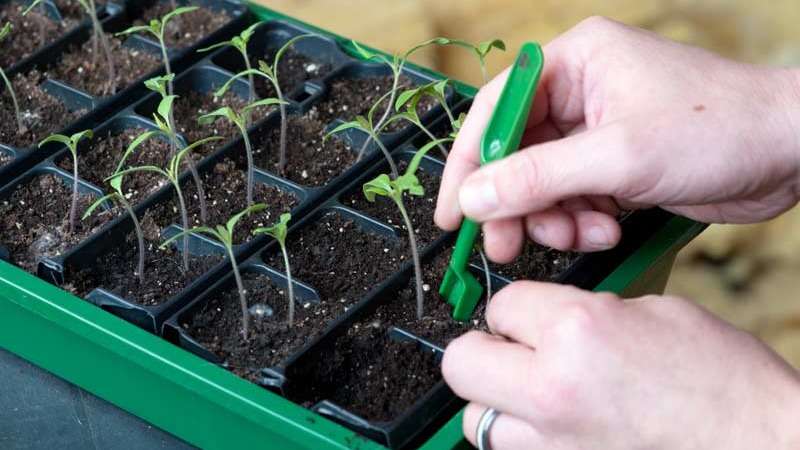
reference... Diving is the removal of the end part of the taproot from a young seedling in order to stimulate branching of the root system. Also, this word is called seating from a general container to individual ones.
Seedlings begin to harden 3 weeks before transplanting into the ground. The hardening procedure is reduced to keeping the seedlings in the open air for 40 minutes initially with a gradual increase in the interval to 13 hours. Simultaneously with daytime hardening, the night temperature of the room where the seedlings are brought is reduced to 13 ° C.
How to grow tomatoes
After 2 months, the seedlings are ready for transplanting into open ground - after the threat of night frosts has passed and the ground warms up to 15 ° C. They are transplanted into the greenhouse 2 weeks earlier.
Landing
Planting pattern: 50 cm - the distance between the seedlings, 40 cm is left between the rows. For 1 sq. m place 3-4 seedlings.
They are planted in shallow holes, after filling them with water and adding a little wood ash to the bottom of each. After transplanting, the land is watered again, loosened and young bushes are left to adapt to new conditions for 1 week.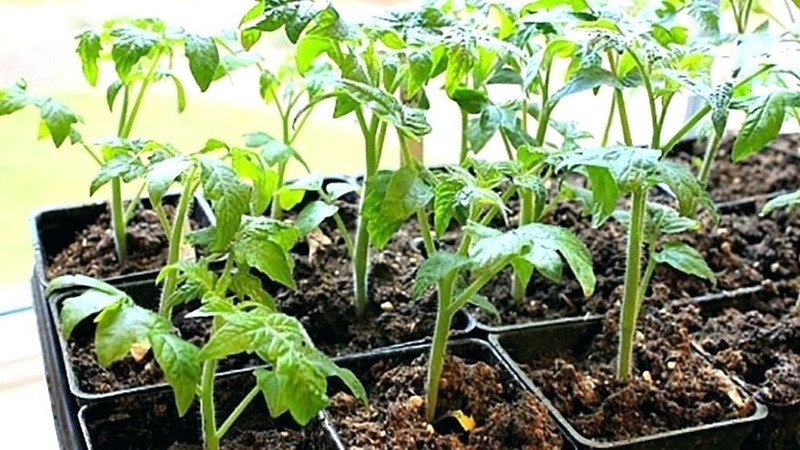
Tomato care Auria
After adaptation, regular watering is established 2 times a week. Watered in moderation, with warm, settled water, strictly at the root. After each watering, the soil is loosened, removing weeds with roots, which contributes to better oxygen penetration to the young roots.
To retain moisture, the beds are mulched. Additionally, mulching is a necessary preventive measure in pest control.
On hot and dry days, the number of irrigations is increased to 3-4 times a week, be sure to control the level of humidity in the beds, since the culture is susceptible to fungal diseases.
The first feeding is carried out 10 days after transplanting into the ground. They are fed with superphosphate or mullein infusion in a ratio of 1:10.
reference... When fertilizing with organic matter, strong dilution is necessary to avoid scalding the root system.
The second feeding is carried out during flowering.They are fed with a full range of mineral fertilizers or organic matter. As organic matter during this period, not only mullein infusion is suitable, but also bird droppings in a 1:15 dilution.
For the third time, the culture is fed during the ripening of the fruits, adding potassium salt to mineral fertilizers or organic matter for faster pouring of vegetables.
Features of cultivation and possible difficulties
Tall bushes require a mandatory garter, otherwise they will not support the weight of ripe vegetables. They are fixed to the support as soon as the stems are of sufficient height. The support is wooden stakes installed next to each bush, or metal rods. They fix not only the stem of the plant, but also the fruitful branches.
For the correct distribution of nutrients, the plants must be pinned.
reference... Stepsons are extra branches that do not participate in fruiting, but consume nutrients.
The pinching procedure is carried out in the early morning so that the resulting wounds heal completely by the evening. This reduces the risk of infection. The plant is formed into 1 or 2 stems. This technique helps to maximize the yield.
Diseases and pests
Tomato variety Auria has a medium resistance to diseases of the Solanaceae family. Most often, it is infected with neighboring crops. Therefore, it is important not to plant nearby plants of his family.
The tomato is prone to top rot and dry spotting. With top rot, dark brown spots appear on the fruits, which make the vegetables unsuitable for consumption. It will not be possible to save the affected fruits, but spraying with Bordeaux liquid will stop the development of the fungus.
The preparation "Antrakol" will help to cope with dry spotting. This disease, like apical rot, is a fungal one. Therefore, first of all, prevention is needed. It includes weeding, loosening, moderate watering.
Greenhouse structures are subject to mandatory ventilation, since the constant flow of fresh air destroys the disease-causing environment.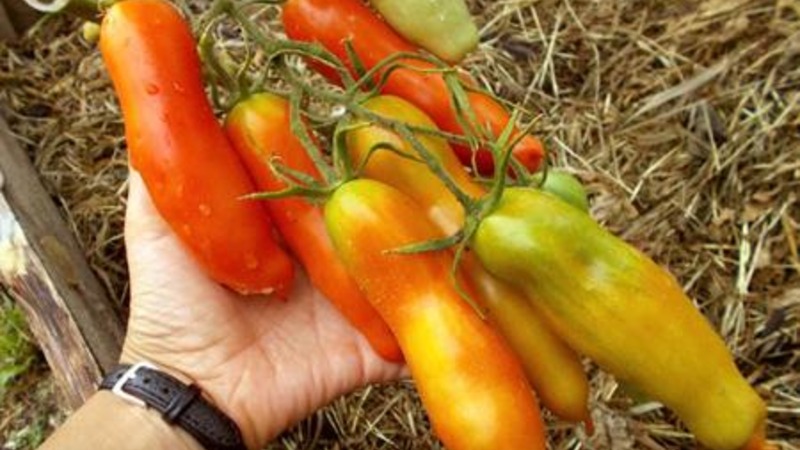
Of the pests for tomato, whitefly, spider mite, Colorado potato beetle and aphids are dangerous. To eliminate the whitefly, pheromone traps are installed. They only capture harmful butterflies without harming non-pest insects.
The habitat of the spider mite is greenhouses. To destroy the usual conditions of the parasite, it is enough to regularly ventilate closed structures.
A soap solution that is used to treat the stems saves from aphids. The Colorado potato beetle is harvested by hand and burned in glass jars.
reference... The most effective method of dealing with diseases and pests is prevention. It is recommended to inspect plants for the presence of pathogenic flora every day.
The nuances of open ground and greenhouse conditions
The variety is recommended for growing outdoors and greenhouses. When growing in greenhouses, remember that the crop loves sunlight. If it is not enough, artificial lighting will be needed, otherwise the growth of the bushes will slow down. Do not forget about this when choosing tomato beds on the street: plant seedlings only in sunny, unshaded areas.
The formation of plants depends on the regions in which they are grown. In the northern regions, the culture is carried out in 1 stem, and in the southern regions, it is allowed to lead in 2 stems. It is under such conditions that the highest rates of fruiting are observed.
All lower leaves are removed without fail. With constant contact with wet beds, they rot, which contributes to the spread of fungal spores. Removing them reduces the risk of infection.
Since plants have brittle stems, the garter must be taken seriously. It is best to fix the stems and branches with fabric bands that perfectly support the plant without harming it.
Harvesting and application of the crop
When sowing seeds in February, the harvest begins in mid-June.Maturation is amicable, with whole brushes, which simplifies their collection.
The use of ripe vegetables is universal. Thanks to their excellent taste, they are consumed fresh in salads, a variety of snacks, sandwiches, canapes. In hot and vegetable dishes, they perfectly complement other vegetables, and are well suited for baking with meat.
During heat treatment, the peel does not crack, therefore they are used for whole-fruit canning. Small tomatoes fit perfectly into jars, while retaining their taste.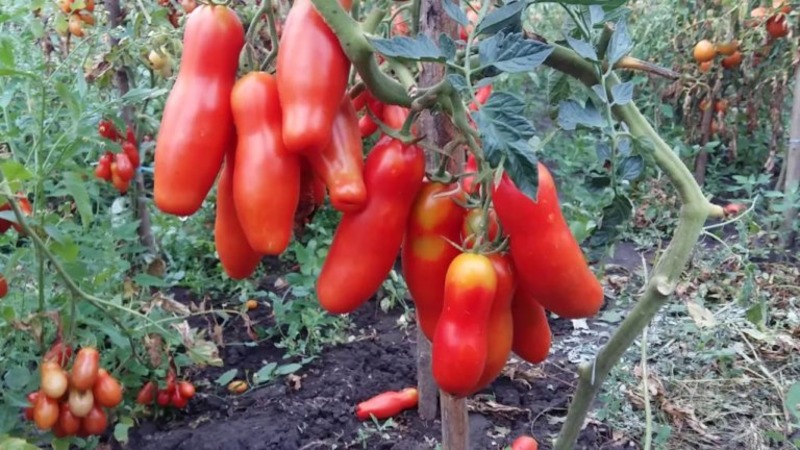
The meatiness of tomatoes has a good effect on the consistency of tomato paste, vegetables retain their taste perfectly after processing, giving the product a sweet taste. Tomatoes are also used for making pickles, marinades, lecho, ketchup, adjika and juices.
Ripe vegetables are subject to long-term storage and can withstand long-term transportation, preserving their presentation and taste.
Advantages and disadvantages of the variety
Vegetable culture has many positive qualities:
- high rate of fruiting;
- good adaptation to weather conditions;
- the possibility of breeding in all regions;
- uncomplicated agricultural technology;
- uniform ripening of fruits;
- excellent taste;
- unusual appearance;
- versatility in cooking;
- long-term storage;
- long transportation;
- the ability to independently prepare seeds.
Some negative aspects:
- average resistance to disease;
- fragile plant stem;
- requires compulsory pinching;
- requires a garter.
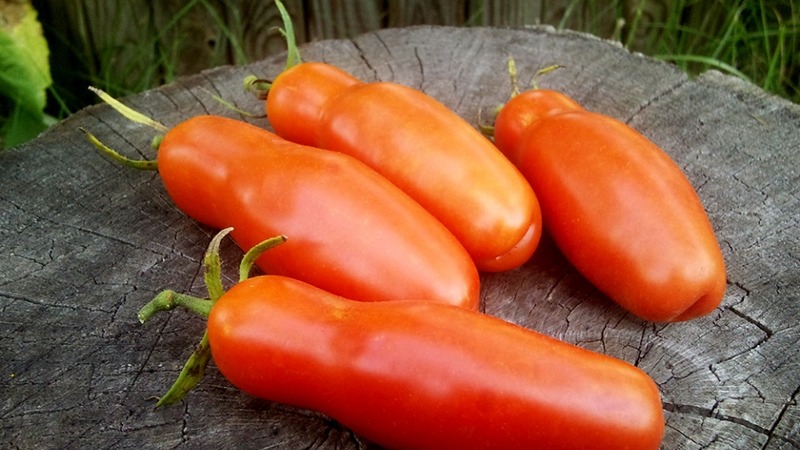
Farmers reviews
Reviews about Auria tomatoes are quite convincing and eloquent. The section will acquaint you with the opinions of gardeners who have grown tomato crops on their plots.
Tatiana, Yaroslavl: “I grew the tomato in a greenhouse. The yield turned out to be very good, she collected 4 kg of fruits from each bush. The taste is pleasant, it is a pleasure to use them for salad. There was also enough for winter preparations ”.
Tamara, Astrakhan: «I have been planting this species for 3 years. When planting, I put a handful of feathers - this creates favorable conditions for beneficial insects that live in the soil. I water it through a plastic bottle at the root. The result does not keep you waiting. Always with vegetables: both in winter and in summer. "
Gennady, Ulyanovsk: «Grown in a greenhouse, tomatoes did not hurt. Seeds on sale are not common, so I leave my own. Most of all they like in pickles and marinades. The best winter harvests from these tomatoes ”.
Read also:
How and what to feed tomatoes after planting in the ground.
How, when and how to feed garlic after winter - advice from experienced gardeners.
Conclusion
Tomato Auria does not require special care, so every gardener can grow it on his site. Subject to the simplest agrotechnical techniques and rules of crop rotation, a decent harvest of unusual tomatoes of excellent taste is obtained.
Adaptability to different climatic conditions makes it possible to breed a culture in any region - undoubtedly, this is a big plus. And if you want to plant Auria, it is not necessary to buy seeds again, they are easy to prepare yourself.